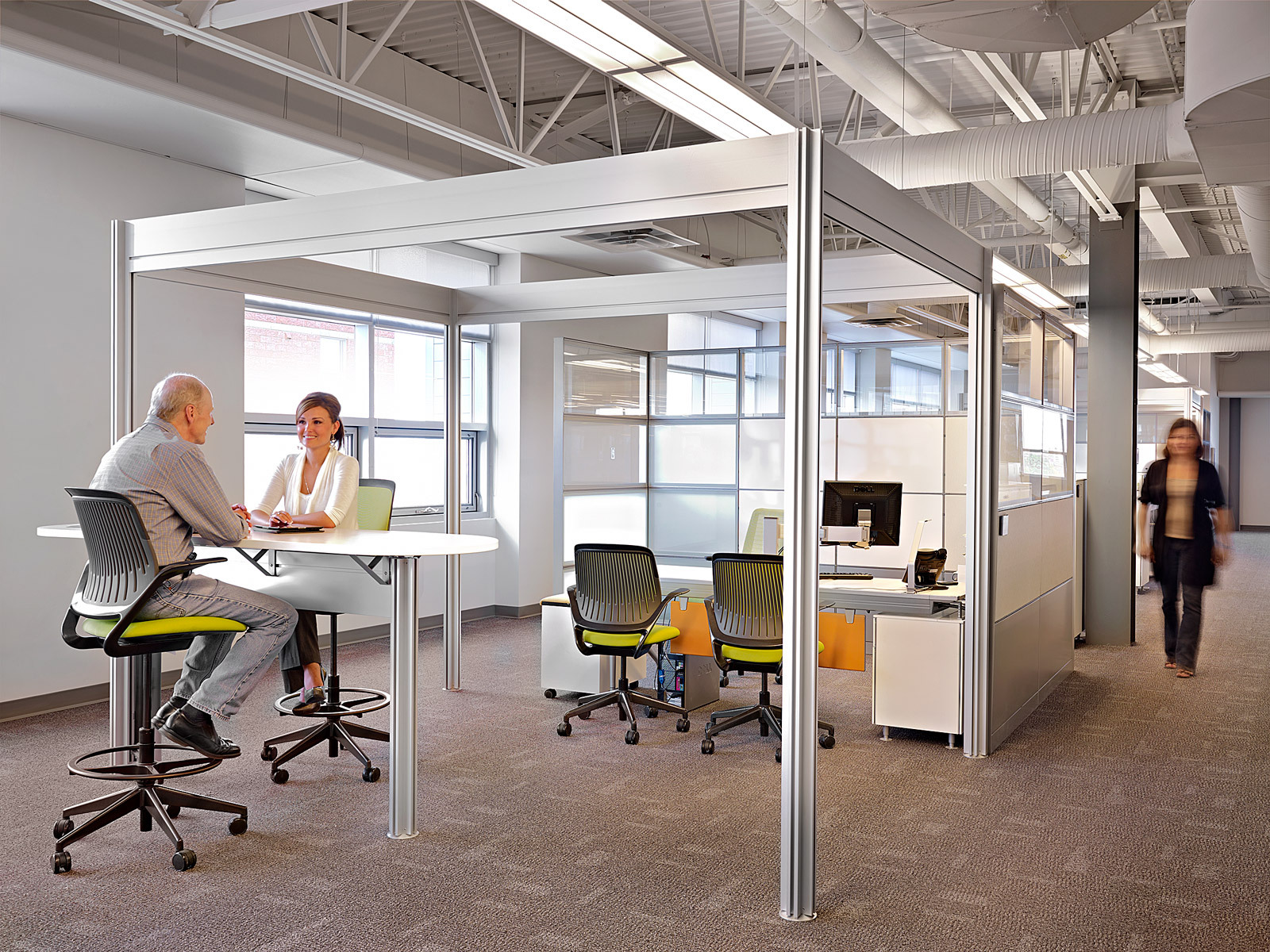
Several business giants, from Google to the federal government’s General Services Administration, are known for doing away with cubicles in favor of open workspaces. The idea there is to foster collaboration and innovation while saving space (read: a buck). But, while dismantling cube walls can mean breaking down communication barriers, such setups can actually lead to decreased productivity, among other negative outcomes.
Mark McGraw, of Human Resource Executive Online, recently explored some of the disadvantages of adopting an open-office plan.
- Those walls can be awfully helpful when it comes to slowing the spread of germs. A recent study found that employees in open offices reported getting sick 62 percent more than those in cubicles.
- Employees generally reported higher stress and less satisfaction after transitioning from personal office spaces to an open setting, both one month and six months after the move.
- Thanks to an environment rich in distractions, design schemes without walls often don’t afford enough privacy for workers to effectively carry out their individual tasks.
As to whether open spaces or individual workstations are better for teamwork and employee satisfaction, the jury is still out. McGraw interviewed one executive who posits that the solution might be in building a hybrid environment and allowing staff to choose how and where they work.
Read the full article here.



